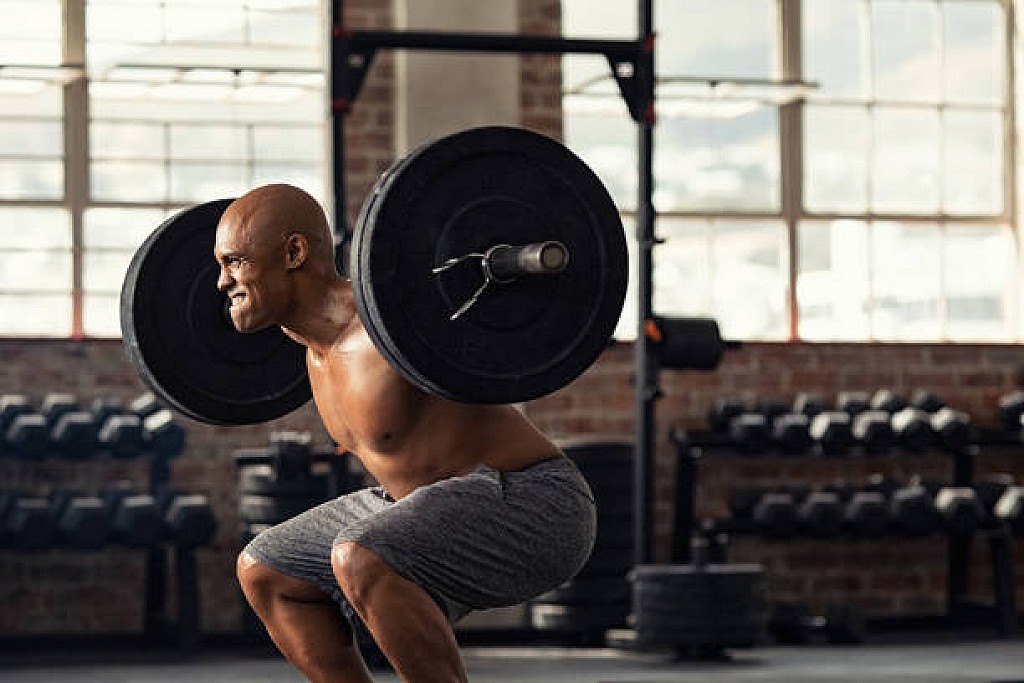John F. Groom , United States Aug 25, 2024
Greg recently made a post talking about form, and I want to address that. First of all, I wholeheartedly agree that almost any movement is better than no movement at all. The macro problem today in society across the globe is that people have almost universally adopted sedentary lifestyles with far too little movement.
For exercising, form is important, but "perfect form" is a vague and often meaningless phrase. First of all, everyone's body is somewhat different, and to a small degree how you do an exercise depends on your particular situation. For instance, as an older man, when doing a bench press, I don't bring the bar all the way to touch my chest, which would be regarded as a violation of "perfect form" by most people who understand "proper" bench press form. My modified bench press, bringing the bar down so my upper arms don't pass a 90 degree angle with my forearm, is designed to save my anterior deltoid, the front part of my shoulder. Men like myself who have been doing shoulder exercises they're entire life are very likely to develop bone spurs in their shoulder, as I have; in fact, there is a phrase for this, "weightlifter's shoulder".
Even though I never had surgery to repair this, I no longer have shoulder problems. I solved this by not doing any exercise that brings my elbow behind my shoulder, so dips are out. I also modify my pushups so that I don't break that my chest doesn't go below my shoulders, or at least not too much below. Its also important to build opposing muscles, like the posterior deltoids, by doing rows, but that alone won’t solve the shoulder issue.
Beyond the fact that certain exercises need to be modified for personal situations, there is also debate about what actually is perfect form for any given exercise. As usual, you can find many different points of view when doing an online search. To return to the bench press, there are different types of guidance given about where you should hold your hands, but this is really more a matter of personal preference and what muscles you are trying to work than a hard and fast rule. (Holding your hands closer together will focus on your triceps; further apart will focus more on your chest, although in each case you’ll be working both muscles.)
There are some good general rules to keep in mind for form. You want to be in control, no matter what exercise you are doing. If your body, or a barbell, is jerking wildly, that’s usually not a good sign. When lifting weights, slower is generally better, particularly on the negative part of the movement, which, if done correctly, actually builds more muscle than the primary movement. For instance, when doing an arm curl, the negative part of the movement is returning the bar from the curled position back to the hanging position. Do it slowly and you'll see how difficult the movement becomes. For building muscle mass, a controlled slow movement with a lighter weight is always better than a fast, jerky movement with a heavy weight.
Note that everything I say pertains to building general health and fitness, which is the objective of Global Fast Fit. When playing sports, explosive movement can actually be very important, and that involves a different kind of form. But to build muscles and strong tendons and joints, you want a slow steady, consistent, controlled movement when lifting weights.
In doing the big 3 powerlifting movements you do have to be very careful about form, as the squat, bench press, and deadlift tax the whole body and often involve very heavy weights. But even here I disagree with the perfect form argument. First of all, let me just state the obvious; if you’re lifting heavy weights on the bench press without a spotter you’re making a mistake; potentially a life threatening mistake.
But even if we can agree on what constitutes perfect form for these 3 exercises – which I doubt – its almost impossible to maintain when going for that last rep on a hard set, or a personal record. The squat used to be one of my best lifts, as I have strong legs, and I did a 435 pound free weight squat when I was young and a 600 pound Smith machine squat in 2019. But I rarely do squats now, and when I do I keep the weights low and go very slowly and carefully. The risk of back injury for both heavy squats and deadlifts is just too high, in my opinion, to justify. I know there are many who disagree with this, and regard squats and deadlifts as absolutely fundamental, and safe if using “perfect form”. Again, I disagree. And I’ve been lifting weights for 50 years without a serious injury, while still maintaining high degrees of workout intensity.
Form in the Global Fast Fit routine? That’s a whole other post.
S. Sean Suvanadesa
2 months ago
As "perfect form" is very vague, I believe I can give it some kind of definition.
Using the bodyweight squat as an example, when I refer to "perfect form", I refer to the performer being in as good a position as they can possibly be, and going as far down as their body allows, in as controlled a motion as possible. If someone has to force any of the above, then their form is no longer perfect.
If they have to force their position then they're too weak to even start the required motion.
If they have to force the depth of the motion then they're risking injury.
If they perform the motion too quickly, then their body is compensating and not utilizing the various muscle groups the motion is meant to target and activate.
Luckily, when most people are performing the normal and lite Global Fast Fit routine they generally don't force the depth of the motion as their main goal is to do a specific amount of repetitions per exercise so they do them quickly and don't go further than what their body can allow.
My bodyweight squats will never look "perfect" to most people because I have serious valgus collapse as I move downward. I can only go as far as I can go to not exacerbate the issue. While I can't go all the way down with my hip to the floor, by going down to seated level, and not collapsing my knees inward or bending my back, I would consider this form "perfect".
What's great about Global Fast Fit is that it forces me to address these issues outside of the actual routine. I have to work on dealing with the root of the valgus issues in order to improve my squats so that I can go further down.
I believe this is what's meant by some movement is better than none. I also believe that this definition of "perfect form" means that there are better "perfect forms" than others because it's highly dependent on what a person is capable of.
 Login with Google
Login with Google

Login to Comment